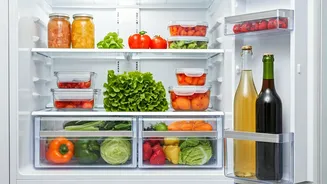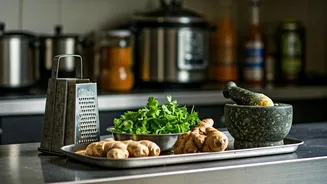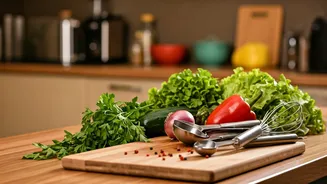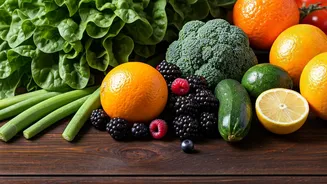Fridge Organization Essentials
Effective refrigerator organization is key to keeping food fresh. First, place lemons in the fridge instead of on the counter to maintain their freshness.
Next, unpack cheese from its plastic wrap, as this can trap moisture. Furthermore, familiarize yourself with your refrigerator's temperature zones, and use them accordingly. Remember, the top shelf is often warmer, while the bottom is colder. Also, keep your greens, such as lettuce and spinach, fresh by storing them with a paper towel to absorb excess moisture. Finally, always double-check the refrigerator temperature to ensure it is set correctly for optimal food preservation.
Produce Storage Secrets
Extend the life of your produce with smart storage techniques. It's best practice not to wash produce until you're ready to eat it; washing can accelerate spoilage. To keep berries fresh, store them in specialized produce savers designed to promote air circulation and prevent mold. You can also stash herbs upright in fresh water to keep them fresh for longer. For herbs that are nearing the end of their life, freeze them in olive oil to use later in cooking. Additionally, freeze any greens that are past their prime, like kale or spinach, to use later in smoothies and boost nutritional value.
Freezing Food Smartly
Freezing is a great way to preserve food and reduce waste. First, if you have leftover broth or stock, freeze them in small portions. Also, freeze meat if you're not planning to cook it immediately. Then, use this technique with leftover tomato paste by freezing it in small scoops. Remember to freeze lime juice into ready-made margarita starters for convenient cocktails. Finally, it's essential to freeze any leftover ingredients or components of a meal for future use, and prevent food wastage.
Pantry & Leftover Tips
Proper pantry storage is also crucial. Store natural nut butters upside down to prevent the separation of oil and solids, making them easier to mix when opened. When dealing with canned food, avoid storing leftovers directly in the can after opening; transfer them to a container. When planning meals, take note of any ingredients you can freeze for later use. Make use of freezer-friendly ingredients for quick meals.











